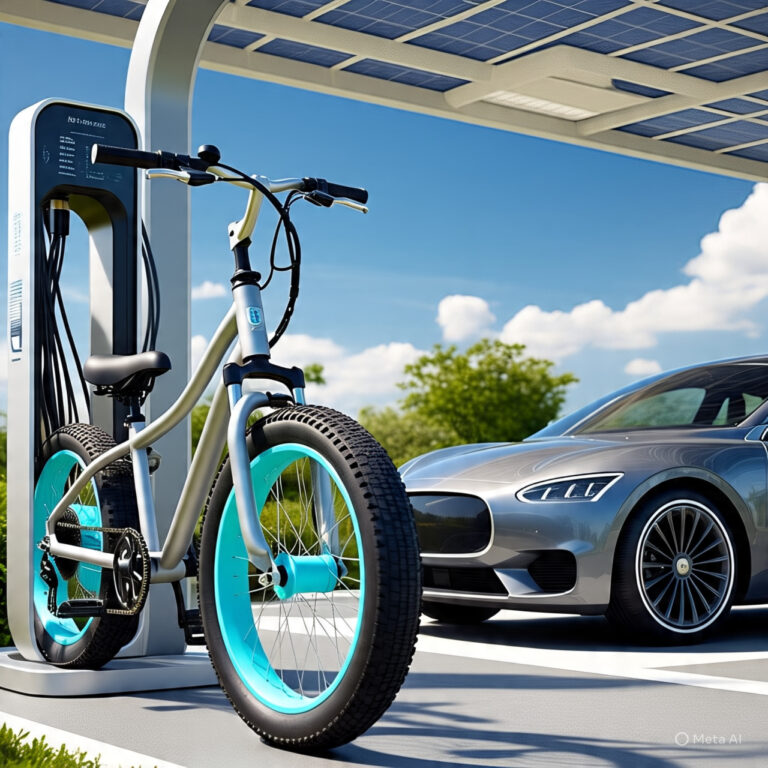
add here text

Most Common Electric Vehicle Problems
Swapnil r. sonawane
June 05, 2025
related topics
⚡ Introduction:
Electric vehicles (EVs) are rapidly transforming the global automotive landscape, offering cleaner, quieter, and more efficient alternatives to traditional gasoline-powered cars and scooters. From the bustling streets of India’s metropolitan cities to the vast highways of the United States and the environmentally conscious roads of Europe, EV adoption continues to accelerate. However, despite their many advantages, electric vehicles face a unique set of challenges—ranging from battery degradation and charging infrastructure limitations to software glitches and maintenance hurdles.
Understanding these common electric vehicle problems is essential for current and prospective EV owners who want to maximize their vehicle’s performance, longevity, and overall driving experience. This in-depth guide explores the most frequent EV issues affecting electric cars and scooters across diverse markets—India, the USA, and Europe—providing practical solutions and expert insights. Whether you are dealing with EV battery capacity loss, charging port failures, this comprehensive resource will help you navigate the evolving world of electric mobility with confidence.
🧾 Quick Summary: Common EV Problems in Cars & Scooters (India, USA & Europe)
As electric vehicles (EVs) continue to redefine the future of transportation, understanding the most common EV problems is vital for every current and potential owner. Whether you’re navigating city streets in an electric scooter in India, cruising highways in a long-range electric SUV in the USA, or commuting in a compact electric car in Europe, being informed about these challenges can help you make smarter decisions around maintenance, usage, and even which EV model to buy.
Some of the most reported electric vehicle issues include:
Battery degradation over time, leading to reduced range and efficiency.
Charging system failures at home or at public charging stations.
EV software glitches and bugs that can impact user experience and performance.
Regenerative braking issues, which can compromise energy recovery and safety.
Limited after-sales service and support, especially in newer or developing EV markets.
These challenges can affect not only the performance but also the long-term satisfaction of owning an electric vehicle. However, many of these issues are manageable with the right approach.
By staying informed, performing regular EV maintenance, using recommended charging practices, and opting for trusted EV brands with reliable service networks, you can extend the lifespan of your electric vehicle and enjoy a smoother ownership experience.
Embracing electric mobility isn’t just a step toward sustainability—it’s about adopting a more intelligent, cost-effective, and future-ready mode of commuting. With the right knowledge and preparation, your shift to an electric vehicle can be seamless, rewarding, and truly green.
🔋 1. EV Battery Degradation: A Universal Concern

Battery degradation is a natural and gradual loss in energy storage capacity that occurs in all lithium-ion batteries over time. For EVs, this means reduced driving range, slower charging, and overall lower performance.
⚠️ Why it happens:
Continuous charge/discharge cycles
Exposure to high or low temperatures
High C-rate charging (fast charging with high current)
Improper battery management or poor thermal regulation
📍 Regional Insight:
India: High ambient temperatures and grid instability accelerate battery wear.
USA: Regular use of Level 3 DC fast chargers on highways expedites cell aging.
Europe: Cold climates (e.g., Scandinavia) slow down battery chemistry, impacting range and charging.
✅ Solution:
Maintain state of charge between 20% and 80% for daily use.
Use fast chargers sparingly; prefer Level 2 charging.
Enable battery pre-conditioning before charging in extreme temperatures.
🔌 2. Charging Issues: From Plug to Power Problems

EV charging issues are among the most common and frustrating experiences for EV owners. These issues stem from hardware, software, or grid-level mismatches and vary by geography and charging infrastructure maturity.
⚠️ What goes wrong:
Faulty or worn charging cables/connectors
Onboard charger malfunction (the EV’s internal charger)
Handshake failures between the charger and vehicle (software miscommunication)
Grid unreliability or low-voltage supply
📍 Regional Insight:
India: Inconsistent voltage supply and lack of charging standardization.
USA: Non-Tesla EVs may face interoperability issues at certain public stations.
Europe: Users encounter confusion between CCS2, CHAdeMO, and Type 2 plugs.
✅ Solution:
Use OEM-approved home chargers with surge protection.
Update the vehicle’s firmware regularly to ensure charger compatibility.
Use apps like PlugShare, EVgo, or A Better Route Planner to check station status.
🛵 3. Common Electric Scooter Problems in India and Beyond
Electric scooters, especially popular in India and urban Europe, are prone to issues due to weather exposure, budget manufacturing, and high daily usage. Key components like controllers, motors, and battery packs can fail under stress.
⚠️ Key problems:
Thermal runaway or cell swelling in low-grade lithium battery packs
Water ingress into connectors or motor units, especially in monsoon-prone areas
Poorly calibrated throttle response and controller breakdowns
Premature battery drain due to inaccurate BMS calibration
📍 Regional Insight:
India: EV scooter brands like Ola and Hero Electric have reported battery fires and software lockups.
Europe: Shared scooter models face frequent maintenance backlogs and broken throttle units.
USA: Limited adoption but similar battery cycling issues with shared e-scooters (Bird, Lime, etc.)
✅ Solution:
Buy only from brands with AIS-156 battery compliance (India) or CE-certified packs (EU).
Service regularly, especially before the rainy season.
Avoid full discharges; keep SOC above 30% for optimal battery health.
🧰 4. Lack of After-Sales Support and Spare Parts

EV servicing requires specialized tools and trained technicians. Many new brands or budget EVs lack adequate service networks, which creates challenges for timely maintenance and part replacements.
⚠️ Common complaints:
High replacement cost for traction batteries or inverters
Delays in sourcing region-specific parts
Service centers under-equipped to handle advanced diagnostics
Unavailability of parts due to global EV supply chain bottlenecks
📍 Regional Insight:
India: Most Tier 2/3 cities lack trained EV service professionals.
USA: Tesla owners may face delays due to centralized service scheduling.
Europe: Right-to-repair restrictions hinder third-party repair shops from fixing EVs under warranty.
✅ Solution:
Choose vehicles with nationwide service coverage.
Review manufacturer service contracts and extended warranty options.
Stick with OEM parts and avoid unauthorized repairs to preserve battery warranties.
🚀Conclusion: Stay Ahead by Understanding Common EV Challenges
As electric vehicles continue to reshape the future of mobility, being aware of the most common EV problems is crucial for every electric car or scooter owner. From battery degradation and charging system failures to software bugs, regenerative braking issues, and limited after-sales support, these challenges can affect performance and ownership satisfaction if not proactively managed. Whether you’re driving a compact EV in India, a long-range electric SUV in the USA, or a city-friendly electric hatchback in Europe, understanding these issues allows you to make smarter decisions about maintenance, usage, and even vehicle selection.
By staying informed, following best practices, and choosing trusted brands with strong service networks, you can significantly reduce the impact of these common electric vehicle issues. Embracing EV technology isn’t just about going green — it’s about adopting a smarter, more efficient way of commuting. With the right knowledge and preparation, your transition to electric mobility can be smooth, cost-effective, and future-proof.
❓ Frequently Asked Questions (FAQs)
The most common electric vehicle (EV) problems include battery degradation, charging issues, software glitches, and regenerative braking malfunctions. Many EV owners also face limited after-sales service and delays in spare parts, especially in regions like India and rural parts of the USA. Staying updated on software, using proper charging methods, and choosing reliable EV brands can help reduce these issues.
Rapid battery drain in electric scooters is often caused by poor battery management systems (BMS), substandard lithium-ion cells, or riding in extreme weather conditions. In India, overheating during summer or exposure to rain during the monsoon can also impact battery performance. Ensuring proper charging habits and regular maintenance can extend your scooter’s battery life.
To prevent software issues in your electric car, regularly install official OTA updates, avoid using unsupported third-party apps, and reboot the infotainment system if it becomes unresponsive. In areas with weak connectivity like rural India or remote parts of Europe, schedule updates via a reliable Wi-Fi network. Report any persistent bugs to the manufacturer’s service center.

about author
Share this article
subscribe for weekly updates



